I visited Manchester as a tourist about two years ago. It’s nice to be reminded of what an incredible contrast it is to visit a place that way, versus coming in and being hosted by a local activist and having an event to contribute to the life of the city, and having the great pleasure of riding all around the city on a bicycle! Nes is the main organizer of the I BIKE MCR (I Bike Manchester) month-long festival of bicycling events, much like the Bikesummers that happened in North America from San Francisco 1999 through about 2005 or 06 before petering out (maybe it’s going to happen again? Where?)… Anyway, Nes managed to book me a room in the local university where I gave my Nowtopia talk to an appreciative small crowd (it’s midweek of the Easter Break, so lots of folks are elsewhere, home for a holiday break, etc.).
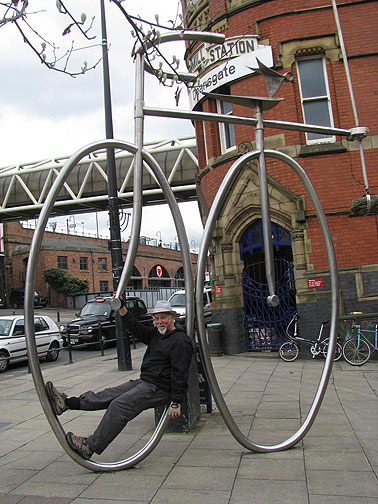
In Manchester, just hanging around!
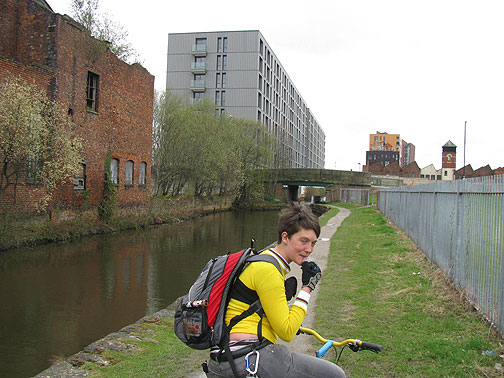
Nes pausing on canal, ruins and new development in distance.
I loved seeing Manchester from bike, with the help of Nes’s charismatic expertise! She took me on fantastic rides down old canals (they are all over the city) and pointed me at a nice council estate gardening project that I found my way to, and also made sure I visited the gleaming bicycle sculpture that is at Deansgate in the city center. Overall I really liked Manchester. The amount of capital that has poured in here is astonishing, but unlike the mess that is underway in Cardiff, a thoughtful reappropriation of historic architecture seems to be the norm in Manchester (there were plenty of exceptions of course). From the old Fish Market facade, now enclosing a major office complex, to the intricate canal system that once was the backbone of early industrialization and is now a most scenic aspect of vast modern apartment complexes that have been built right to the water’s edge throughout the area (often with some sensitivity to the original surrounding mill architecture), I found myself torn. On one hand it’s easy to decry the obvious yuppification and upscaling of the old capital of early manufacturing. No city can stand still as a museum, though, so some transformations are inevitable, but a yearning for something driven by the existing communities, rather than a fake “Creative Class” marketing concept emerges as you take the place in. At the same time, the huge investment that has been achieved in Manchester’s housing and buildings in the past decade or two is remarkable. The breakdown of the development model and of financialized capitalism in general, means that there’s a very interesting starting point for a process of reinhabitation and renewal of a bottom-up politics here.
And Nes and her cycling cohort are clearly part of something new that’s brewing in Manchester. Common to all my stops here in England, I am finding very receptive and enthusiastic audiences, albeit not large (only a couple of dozen to nearly 100 max per stop). The sense of a new politics that is shaking off some of the baggage of the Old and New Left, finding an agenda emerging from urban reinvention, and the kinds of work-project-based initiatives that I talk about in Nowtopia, is unmistakeable. For the moment, a recycling bike shop GBH, and a thriving bike polo scene, in addition to dozens of planned social rides (often with a good deal of pub-crawling and beer imbibing) are helping a new community to find itself.
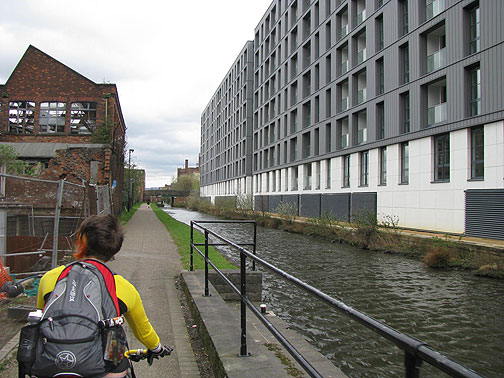
Crusing behind Nes on a canal.
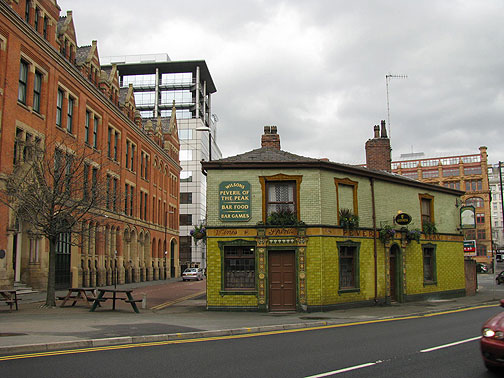
The historic pub is a favorite of Manchester United hooligans... surrounded by new development and redeveloped old buildings.
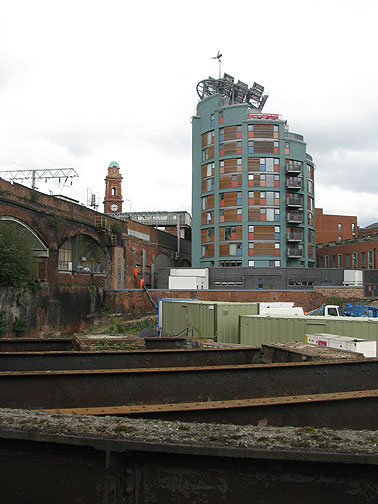
Supposedly a very "green" building alongside historic rail lines in center.
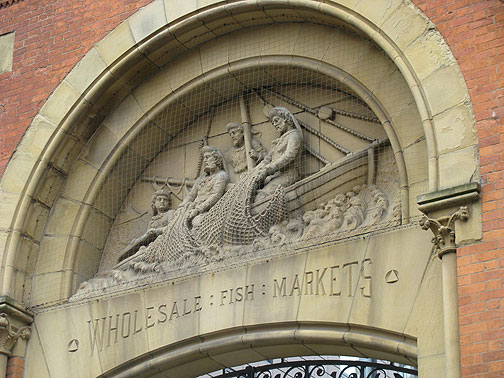
Old fish market facade, now enclosing a new office building.
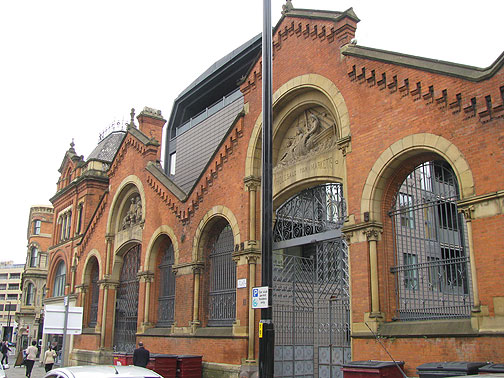
See the dark glass building behind the facade.
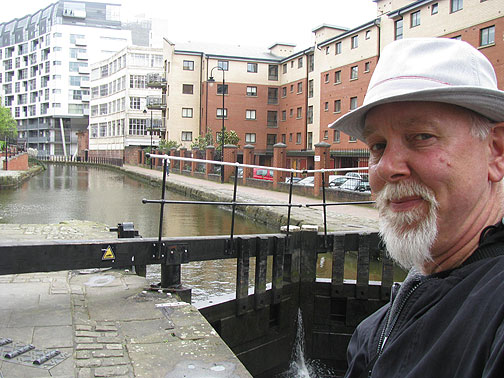
I am crazy for the old canals and locks all over this area.
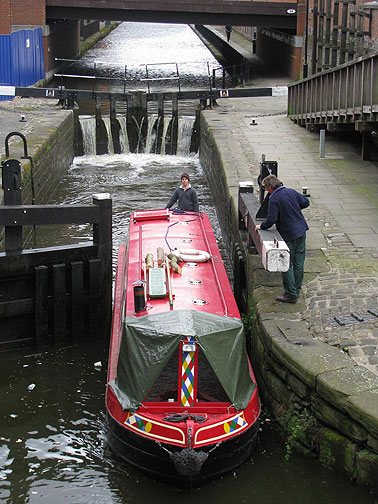
Local canal boat makes its way through a lock.
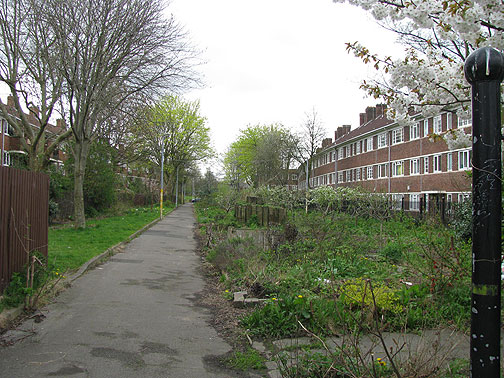
Leaf street gardens, a regular Nowtopian kinda thing...
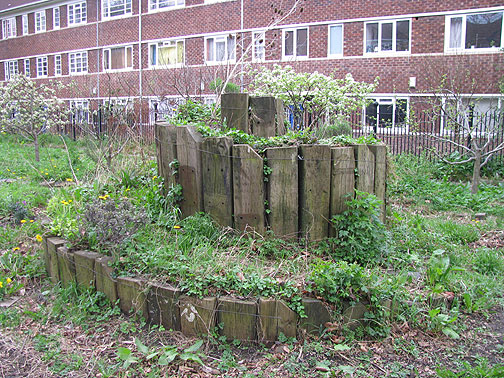
Spiral vegetable bed at Leaf Street gardens.
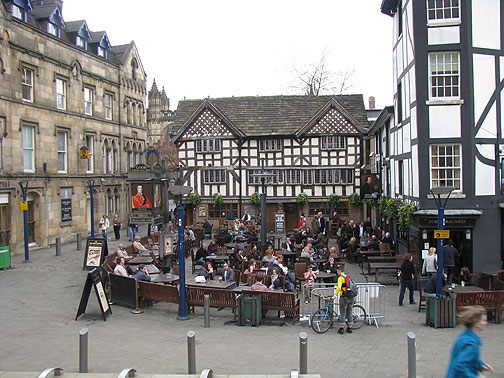
Had to quaff one at this ancient pub, relocated to this center city locale.
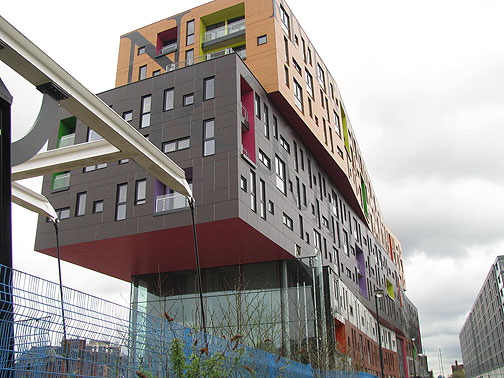
This pretty cool modern building is built along a canal.
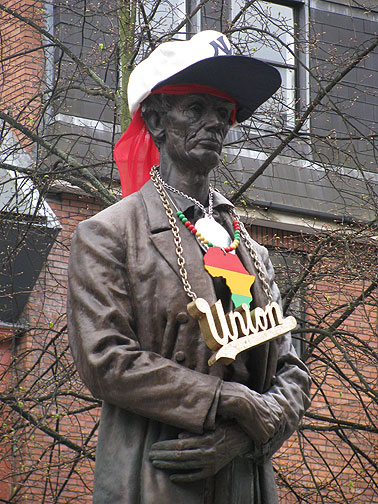
Honest Abe as Homeboy? A weird art project commissioned by local authorities. The statue actually commemorates Lincoln's thanks to the textile workers of Manchester, for supporting the Union during the Civil War (and the effort to abolish slavery) even though it made life in England for working people much harder, since there was dire shortages of raw cotton due to the embargo against the South.
The morning after my stay in Manchester, Nes suggested I join her and some of the cycling community in heading out to Hebden Bridge, a quaint village on an historic Yorkshire canal, for a special Good Friday public play that is known only to locals (It’s called PACE EGG). For some 30 years a strange, Brechtian, hilariously anticlerical and anti-imperial and sacrilegious 20 minute play has been performed on Good Friday at the top of the hill in Hebdenstall. To get there we took the train (while some others cycled for a couple of hours in gray, soggy weather, though not very cold) and once there, we found a version of the play being performed already as we got off the train, by a local high school troupe. We’d heard that a youth group did it too, but didn’t realize it would be in the streets of the town at the bottom of the hill.
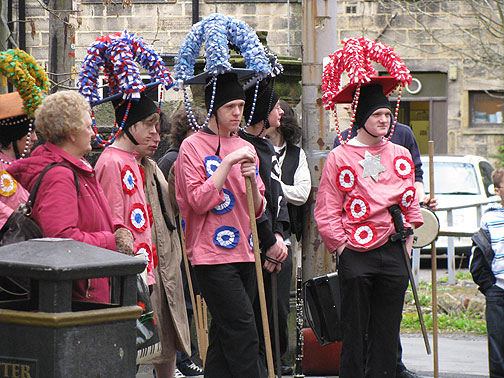
The youth troupe as they started in town.
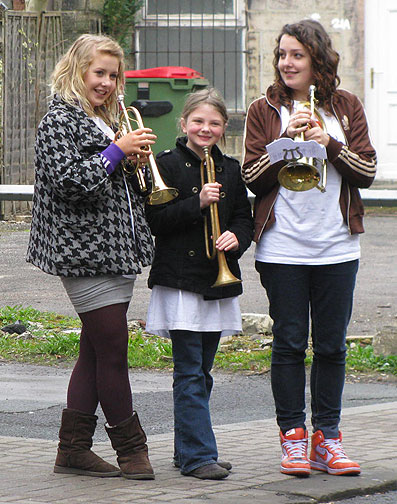
The brass section!
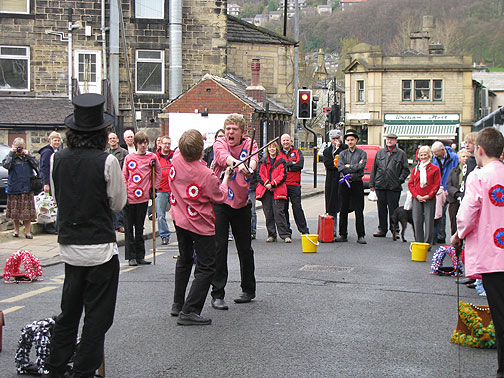
King George and the Slasher fight it out.
After that rendition we climbed a seriously steep, cobbled path for 600-800 feet at least (straight up) with all my luggage (her friends were really gracious about helping me!) and eventually took in the show with the more experienced, older, and funnier performers.
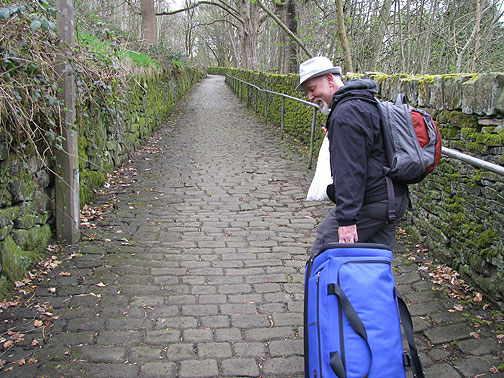
Up the hill to Hebdenstall!
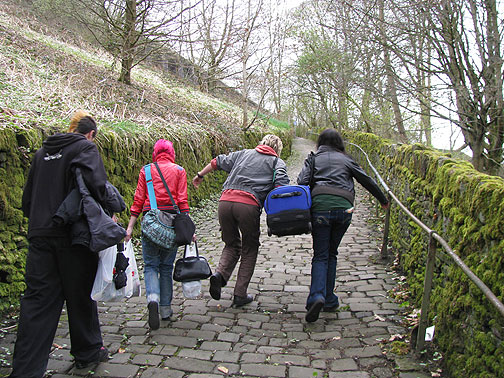
Thanks for the help!
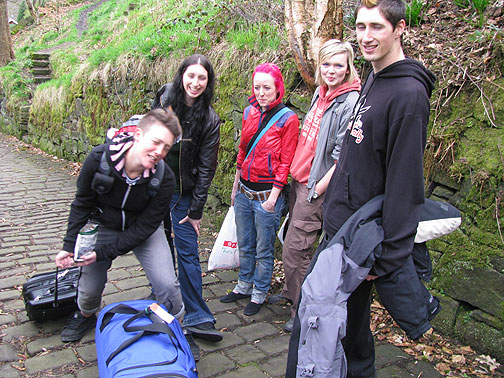
Nes, Cath, Tanya, Katie, and Tommy, my companions for the hike up to Hebdenstall.
It’s a strange amalgamation of King George and various characters who he plunges his sword into, feigning exasperation, teased continually by the characters and the audience. Before it started at the top of the hill there were some Morris Dancers.
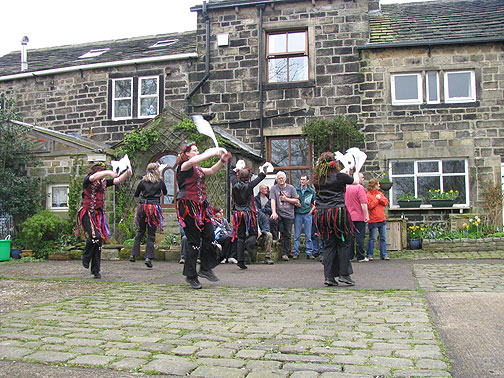
Morris dancers.
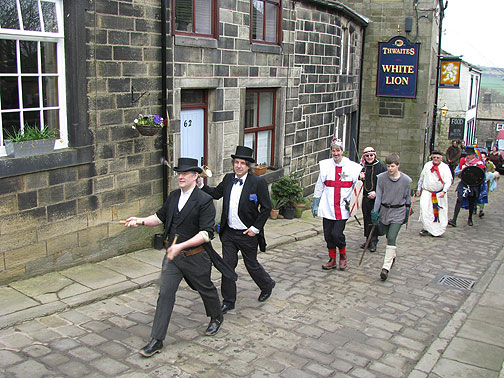
The Pace Egg performers approach.

King George and the Slasher, II.
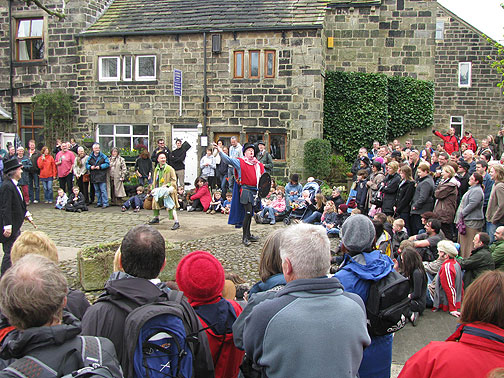
They all take a turn at center stage.
Once it was over we roamed around the adjacent cathedral ruins and cemetery under a drizzle in search of Sylvia Plath’s grave, which we found… an incredibly fun, and serendipitous experience! I felt so lucky, especially to have met Nes and had her skillful and generous hosting!
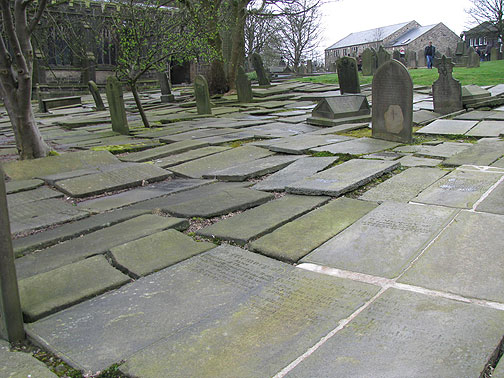
flat lying headstones.
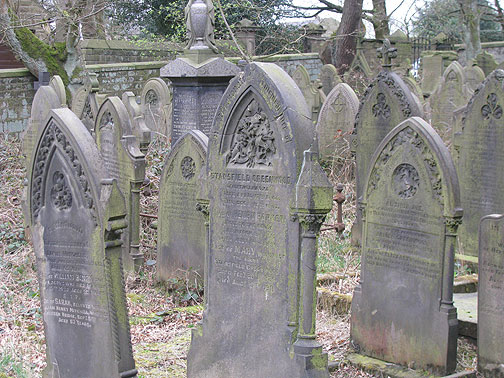
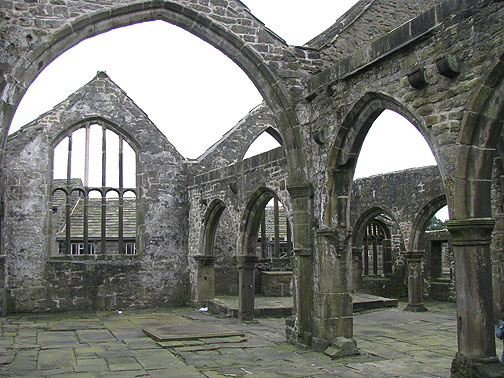

Lastly, a few shots from Hebden Bridge, a fantastic town in Yorkshire along 200-year-old canal…..
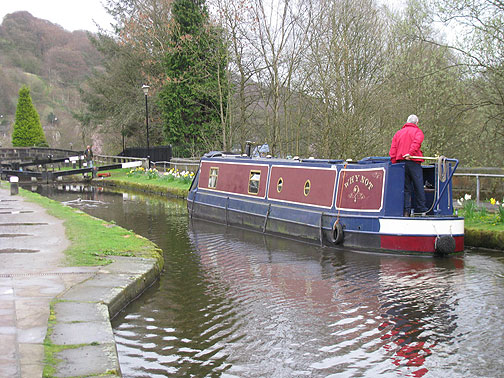
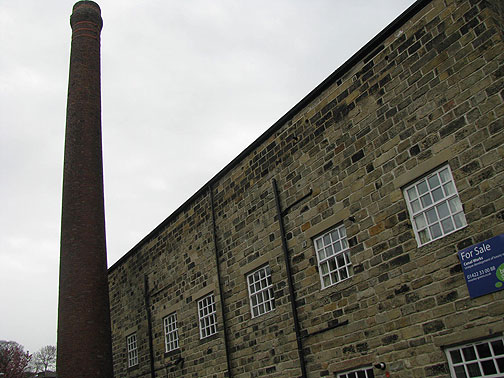
Refurbished old mills now for sale as condos.
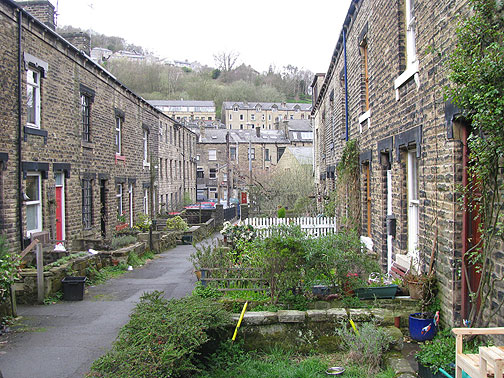
Lovely garden plots in stone yards behind old row houses.












Leave a Reply